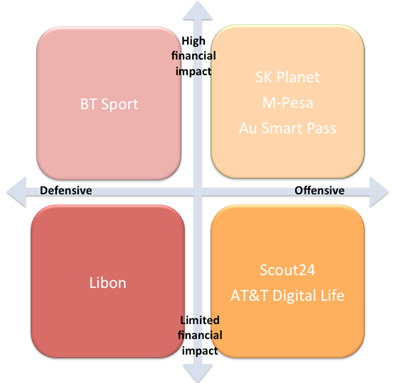
Telco plays in live entertainment
Live entertainment is evolving fast, as greater connectivity and digitisation allows for new experiences for both the audience at the venue and the people watching online. How can telcos play a more valuable role?


Live entertainment is evolving fast, as greater connectivity and digitisation allows for new experiences for both the audience at the venue and the people watching online. How can telcos play a more valuable role?

‘Network as a Service’ (NaaS) and ‘enterprise virtual CPE’ (vCPE) are the leading customer-facing applications in which NFV and SDN approaches are being applied. This report looks at 13 leading operators in North America, Europe and Asia, what they are doing, and what strategies are emerging.

STL Partners explores in detail how thirteen leading operators are addressing NFV and SDN. By exploring each management team’s vision for the technology and the current implementation activities, we have been able to identify six segments – from dynamic ‘NFV Business Model Transformation Pioneers’ to more prosaic ‘Utilitarian Adopters’. The report also outlines three major ‘best-practice’ recommendations for other players.

Our latest analysis identifies seven key barriers that have slowed NFV roll out across six operators (Deutsche Telekom, NTT, Verizon, Vodafone, Swisscom and Comcast), and the approaches being used to overcome them.

Although telcos aren’t generally associated with disruption, many operators around the world have attempted to disrupt adjacent markets, such as digital commerce, entertainment and financial services. In some cases, telcos have even disrupted their core broadband and communications markets. While many of these moves have fizzled out or have flown below investors’ radar screens, several have had a major impact on both the telco’s revenues and relevance. These include SK Planet, M-Pesa, Au Smart Pass and BT Sport. Why do some disruptive moves by telcos succeed and others fail?

Regardless of business strategy, the development of ‘Smart Pipes’ – more intelligent networks – will be a key driver of shareholder returns from operators. Smarter networks will also benefit network users – upstream service providers and end users, and operators, and their vendors and partners, will need to compete to be the smartest. What are they, why are they needed, and what are the key strategies employed to develop them? (February 2012, Foundation 2.0, Future of the Networks Stream).
Facebook user saturation bubble chart